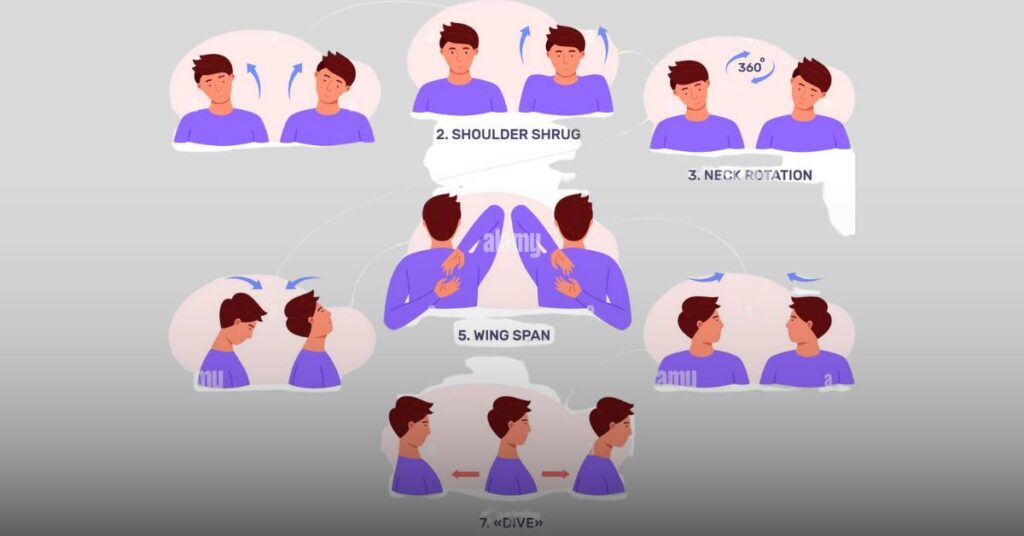Prolonged use of technology has become the standard in our digital age, resulting in a number of health problems, including turtle neck syndrome. This disorder, which is sometimes referred to as anterior head syndrome or turtle neck posture, is caused by holding the neck forward-flexed for prolonged periods of time. This blog will explore the symptoms, causes, and practical health advice for managing and preventing turtle neck syndrome.
What is Turtle Neck Syndrome?
A forward head posture is one of the symptoms of anterior head syndrome, often known as turtle neck syndrome. This happens when the head is positioned ahead of the center of gravity of the body, frequently as a result of staring down at screens or other devices for extended periods of time. This position can cause discomfort, muscle imbalances, and tension on the neck.
Causes of T Neck Syndrome
- Prolonged Tech Use
Constantly looking down at smartphones, tablets, and laptops. - Poor Ergonomics
Improper workstation setup that promotes poor posture. - Lack of Movement
Sitting or standing in the same position for long durations without breaks. - Weak Muscles
Insufficient strength in the neck and upper back muscles to support proper posture.
Symptoms to Watch Out For
- Neck Pain and Stiffness
Discomfort and restricted movement in the neck. - Headaches
Tension headaches resulting from muscle strain. - Shoulder Pain
Discomfort and tightness in the shoulders. - Upper Back Pain
Strain and discomfort in the upper back muscles. - Fatigue
General tiredness due to muscle overuse. - Poor Posture
Noticeable forward head position and rounded shoulders.
Health Tips to Prevent T Neck Syndrome
- Ergonomic Workstation Setup
- Monitor Height: Ensure your monitor is at eye level.
- Chair Support: Use a chair with good lumbar support.
- Keyboard and Mouse Position: Keep them at a comfortable height and distance.
- Regular Breaks
- Rule of 20-20-20: Every 20 minutes, look at something 20 feet away for 20 seconds.
- Stretching: Perform neck and shoulder stretches regularly.
- Posture Awareness
- Check Your Posture: Regularly check and correct your posture.
- Use a Posture Corrector: Consider using a posture corrector device.
- Strengthening Exercises
- Neck Exercises: Perform exercises to strengthen neck muscles.
- Upper Back Exercises: Focus on exercises that strengthen the upper back.
- Proper Device Use
- Hold Devices at Eye Level: Avoid looking down at your phone or tablet.
- Use Voice Commands: Minimize typing and swiping.
- Hydration and Nutrition
- Stay Hydrated: Drink plenty of water to keep muscles hydrated.
- Balanced Diet: Consume a diet rich in vitamins and minerals for muscle health.
Effective Exercises for Turtle Neck Syndrome
- Chin Tucks
- Sit or stand up straight.
- Gently tuck your chin towards your chest.
- Hold for a few seconds and release.
- Repeat 10 times.
- Neck Stretches
- Tilt your head towards one shoulder.
- Hold for 15-20 seconds.
- Repeat on the other side.
- Shoulder Blade Squeezes
- Sit or stand with your arms at your sides.
- Squeeze your shoulder blades together.
- Hold for 5-10 seconds.
- Repeat 10 times.
- Wall Angels
- Stand with your back against a wall.
- Raise your arms to form a ‘W’ shape.
- Slide your arms up and down the wall.
- Repeat 10 times.

Conclusion
In today’s tech-driven society, turtle neck syndrome is a frequent ailment, but it can be handled and prevented with the right knowledge and preventative steps. You may lessen symptoms and encourage a healthier neck position by arranging an ergonomic workspace, taking frequent breaks, keeping proper posture, and including strengthening exercises in your routine. For the long term health of your neck, be conscious of how you use technology and make minor changes to your regular routine.
For More Informative Bogs, CLCIK HERE!
FAQs
What is turtle neck syndrome?
Turtle neck syndrome, also known as anterior head syndrome, is a condition where the head is positioned forward from the body’s center of gravity, usually due to prolonged tech use.
What are the common symptoms of turtle neck syndrome?
Common symptoms include neck pain and stiffness, headaches, shoulder pain, upper back pain, fatigue, and poor posture.
How can I prevent turtle neck syndrome?
Preventive measures include setting up an ergonomic workstation, taking regular breaks, being aware of your posture, performing strengthening exercises, and using devices properly.
Are there specific exercises to help with turtle neck syndrome?
Yes, exercises such as chin tucks, neck stretches, shoulder blade squeezes, and wall angels can help strengthen and stretch the neck and upper back muscles.
How often should I take breaks to prevent turtle neck syndrome?
it is recommended to take breaks every 20 minutes, following the 20-20-20 rule: look at something 20 feet away for 20 seconds every 20 minutes.
